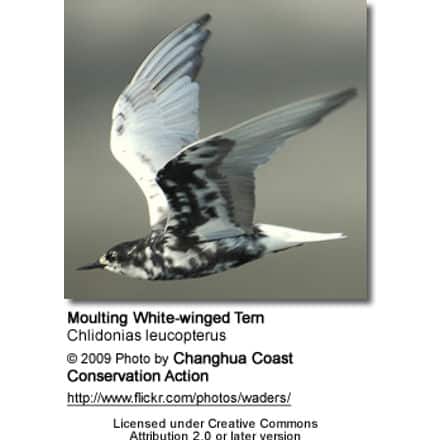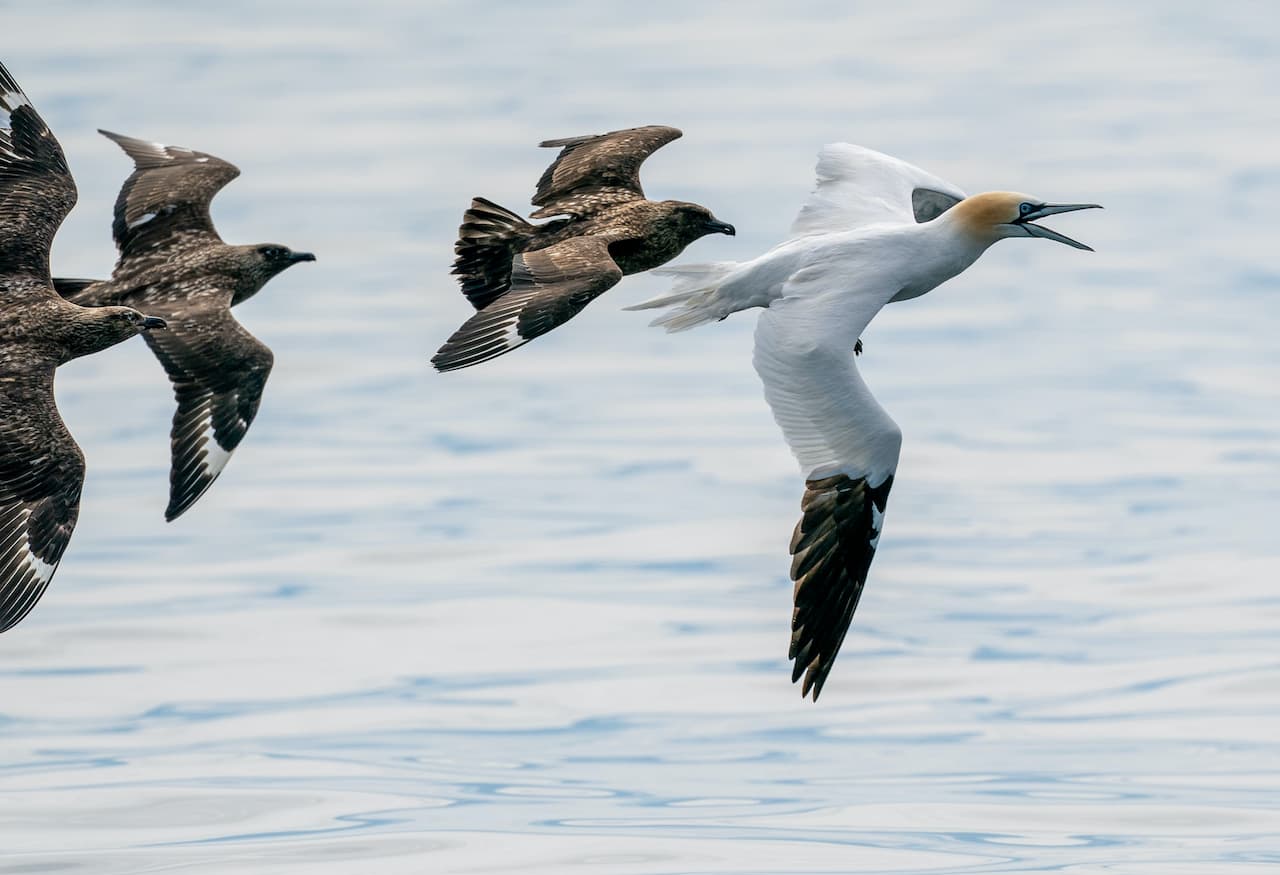White-winged Terns
The White-winged Terns or White-winged Black Terns (Chlidonias leucopterus) are small terns with an extensive range that stretches across large parts of Europe east to Asia and Australia.
They are generally found in or near bodies of fresh water.
There are considerable differences between their winter and summer plumages, being mostly black bodied with pale upper wings during the summer season and mostly white-bodied with darker wings during the winter.
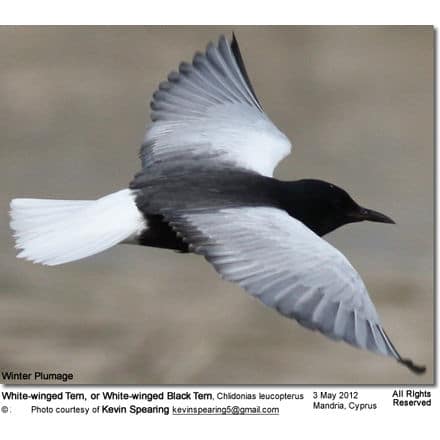
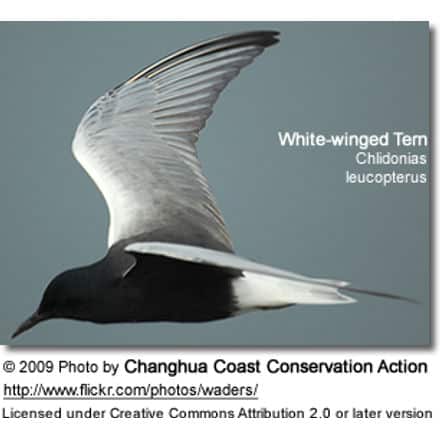
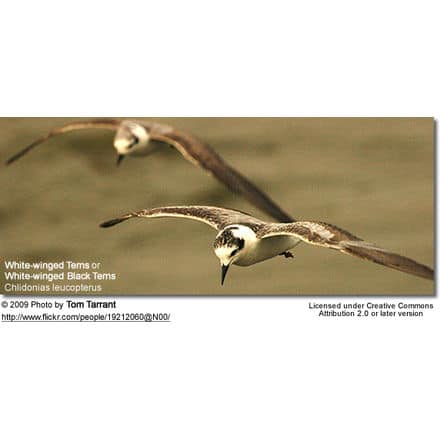
Distribution / Habitat
The White-winged Tern’s extensive breeding range extends from central and eastern Europe (including northwestern Italy) through Siberia, Transbaikal, and northern Mongolia as far as Amurland in the Russian Far East. They are also known to breed in New Zealand.
Northern European populations migrate in large flocks south to Africa for the winter and those further east migrate to winter in China, Myanmar, through Malay Peninsula, Singapore, Straits of Malacca, Borneo, Java, Sulawesi, the Philippines, New Guinea, Australia and New Zealand (where also breeding birds are found).
They are scarce vagrants in North America, where they are mostly found along the Atlantic coast, but a few records of them exist on the Pacific coast and inland in the Great Lakes area.
They occur in fresh marshes and lakes from sea level up to around 6,500 feet (~ 2,000 meters). During the migration, they are found in coastal waters. During the winter, they inhabit rocky coasts, rivers, rice fields, lagoons and dry farmland.
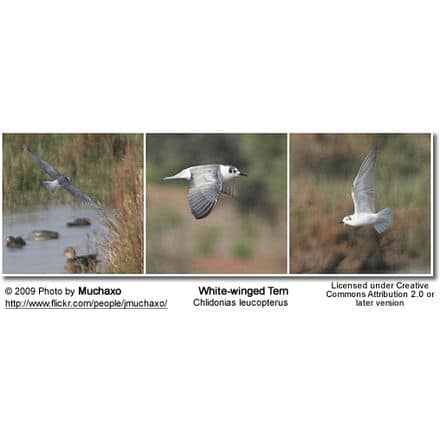
Description
White-winged Terns measure between 7.9 – 10.6 inches (20 – 27 cm) and weigh about 2.2 oz (63 grams).
The short, stubby black bill is about 0.87 – 0.98 inches (22 – 25 mm) long. The legs are reddish.
Breeding Plumage: Mostly black body, white wings, and almost white tail and rump.
Winter Plumage: Mostly greyish-white upper parts, with a black-and-white streak capped, dark outer wings and white under parts.
Flight: Their wing-beats are shallow and leisurely.
Juveniles
Immatures are similar in appearance to non-breeding adults, but can be identified by their entirely black cap.
Similar Species
Birds in winter plumage resemble the larger and longer-billed Whiskered Tern; but the White-winged Tern can be identified by the white rump which contrasts with the rest of the body.
Breeding birds look similar to the Black Tern, but White-winged Terns have mostly white upper wing sand black wing linings. In winter, the White-winged Terns are paler than Black Terns and lack their dark shoulder spots.
The White-winged Terns have been recorded to hybridize with Black Terns in Sweden, Netherlands and possibly England (Chew Valley Lake). These birds show mixed characters of the two species, specifically a combination of the dark back of the White-winged Black and the dark patches on the chest of the Black Tern.
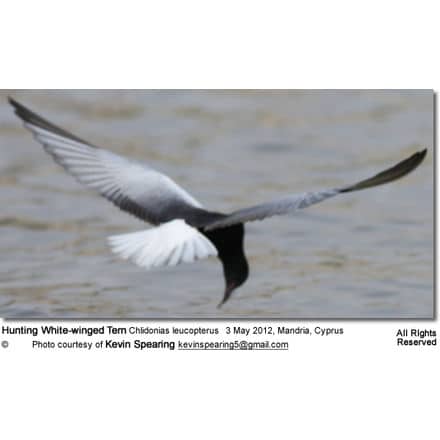
Diet / Feeding
White-winged Terns mostly feed on insects and small fish, as well as frogs and other aquatic critters. They usually fly slowly over water to pick prey off the surface of water or in flight, or they make take it from vegetation. They don’t dive for food.
Breeding / Nesting
White-winged Terns typically breed between April and August in small colonies together with about 20 to 40 other pairs. Nesting usually occurs in freshwater marshes.
The shallow cup nest is constructed out of small reed stems and other plant material, and typically placed on floating vegetation in a marsh or on the ground very close to water.
The average clutch consists of 2 – 4 smooth, slightly glossy eggs which are incubated for 18 – 22 days to hatching.
Hybridization:
The White-winged Terms have been recorded to hybridize with Black Terns in Sweden, Netherlands and possibly England (Chew Valley Lake).
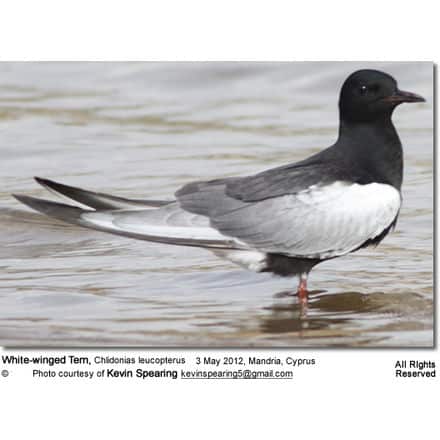
Calls / Vocalizations / Sounds
Alternate (Global) Names
Afrikaans: Witvlerkmeerswael , Witvlerksterretjie …Albanian: Dallëndyshe deti krahëbardhë … Arabic: ??????? ????? ??????, ??????? ????? ?????? ??? …Armenian: ??????? ? ????????, ????????? ???????? … Azerbaijani: A?qanaq sterna … Basque: Fumarell alablanc , Itsas enara hegalzuri, Itsas enara hegalzuria … Belarusian: ?????????? ??????? … Bulgarian: ????????? ??????? … Breton: Ar stêrwennel eskell gwenn … Catalan: Fumarell alablanc, Fumarell negret … Chinese: bai-chi hei yan-ou, ????, ????, ????? … Croatian: Bjelokrila Cigra, Bjelokrila ?igra … Czech: Rybák belokrídlý, Rybák b?lok?ídlý, rybák bìlokøídlý … Danish: Hvidvinget terne … Dutch: Witvleugelstern, Witwleugelstern … Faroese: Vonghvít svartterna, Vonghvít terna … Finnish: Valkosiipitiira … French: Guifette leucoptère, Guifette à ailes blanches, Guifette leucoptère … German: Weissflügelseeschwalbe, Weißflügel-Seeschwalbe … Greek: ?????????????, ???????????? … Hebrew: ?????? ???? ???, ?????? ????????, ?????? ????-??? … Hungarian: Fehérszárnyú szerko, Fehérszárnyú szerkõ, Fehérszárnyú szerk? … Icelandic: Tígulþerna … Indonesian: Dara laut sayap putih, Dara-laut sayap-putih, Daralaut Sayap-putih … Irish: Geabhróg Bháneiteach … Italian: Mignattino alibianche … Japanese: Ha-jiro kuro-hara ajisashi, hajirokuroharaajisashi, Hajiro-kurohara-ajisashi … Korean: ??????, ???????? … Macedonian: ????????? ?????????, ?????????? ??????? … Malay: Camar Bermisai … Maltese: ?irlewwa tal-?ewna? Abajd … Mongolian: ?????? ???????? … Norwegian: Hvitvingesvartterne, Hvitvinge-svartterne … Polish: rybitwa bialoskrzydla, rybitwa bia?oskrzyd?a, Rybitwa czarna … Portuguese: gaivina de asa branda, Gaivina-d’asa-branca, Gaivina-de-asa-branca, Trinta-reis-negro … Russian: Belokrylaya Krachka, ?????????? ??????, ?????? ?????????? … Slovak: ?orik bielokrdly, ?orík bielokrídly, Rybár bielokrdly, Rybár bielokrídly … Slovenian: beloperuta cigra, beloperuta ?igra … Serbian: Belokrila cigra, bjelokrila cigra, bjelokrila ?igra, ????????? ????? … Spanish: Fumarel Aliblanco, Fumarel Blanco, Gaviota Aliblanca, Gaviota golondrina negra, Gaviotín negro, Gaviotín Negro de Alas Blancas, Golondrina-marina Negra … Swahili: Buabua Bawa-jeupe … Swedish: Vitvingad tärna … Thai: ???????????????????? … Turkish: Ak Kanatl? Sumru, ak kanatly sumru, Akkanatl? sumru, Ak-kanatl? Sumru, Beyaz-kanadl? Deniz-k?rlang?c? … Tuvinian: ?? ????????? ??? ??????????? … Ukrainian: ?????????? ??????, ?????? ??????????, ???????????? ?????? … Vietnamese: Nhàn xám … Welsh: Corswennol adeinwen

